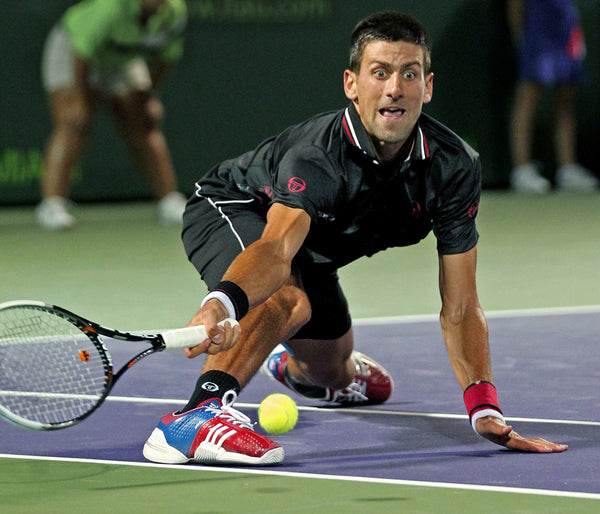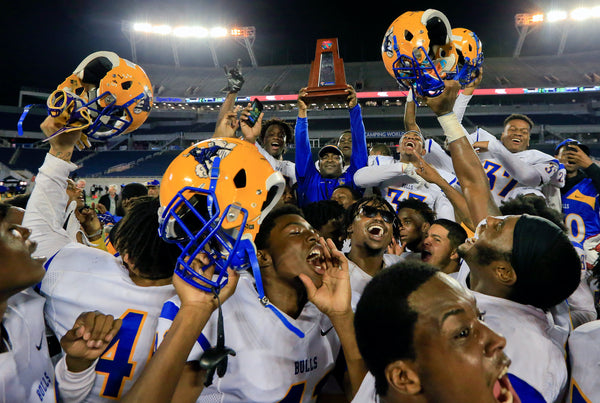Visualize the Moment
By Al Diaz
Miami Herald Photojournalist
Visualize Cuba
My high school football defensive coach, Carmen Grosso, taught me how to visualize. From the sidelines, he trained us to visualize a fumble, anticipate the ball carriers movements for the tackle, or the big play. He would tell us to visualize the action before they even hike the ball. Our team's quarterback, Bill St Pierre, would say, “Visualizing changes reactions into reflexes and helps to do things quicker and better, like a moving picture in slow motion.”
As a photojournalist, visualizing helps me prepare and be ready before the moment. I’ll frame an image, compose and visualize what’s going to happen next before it even occurs. I visualize and place myself in a position to capture the light, the emotion, the movement, and composition all colliding in a split second for the decisive moment to tell a compelling story in a single photograph.
Here are some examples of how I visualized the shot before it happened.
After chasing the funeral caravan carrying the ashes of Cuban leader Fidel Castro across Cuba, it finally arrived in Santiago de Cuba. At this point, I had plenty of photographs of the caravan and the crowds at ground level from previous days so I looked for an elevated position. The juxtaposition of the billboard below the Sierra Maestra mountain range attracted my attention.

The road lined up perfectly as the crowd continued to arrive. I found a two-story structure that would elevate me above the crowd so as not to obscure the caravan. As the sunrise began to reflect too much light on the billboard I climbed the steps higher until I quickly found my way onto the roof as the vehicles approached before getting the shot.
Later that day I stood watching Cuba's revolutionary guard goose step in front of Castro’s tomb. I lined myself up and composed so that the legs would frame the crypt’s plaque bearing the name Fidel at the decisive moment.

Visualize Action
While photographing the world’s top men’s tennis player Novak Djokovic, I decided I had enough action shots of Djokovic at the service line using my Canon 400 f/2.8. So, I repositioned myself between sets and got low in the photo well as I grabbed a Canon 70-200 f/2.8 and waited for Djokovic to rush the net or scramble for the ball. The low angle really accentuates the eyes and the contorted body language.

Visualize a Portrait
In this football season preview, it’s back to the drawing board with Mark Richt returning to coach his Alma Mater as the University of Miami looked to reclaim past glory… it did not happen but the photo illustration worked out as I visualized.
Placing the coach in front of a black backdrop and asking him to wear a black polo shirt, I knew the X’s and O’s would stand out against the solid background. I suggested to coach Richt to hold the white marker and pretend he was drawing on plexiglass. He obliged by leaning to the side making it look like he’s drawing on plexi but he’s actually not, just dead air. I later drew up the Xs and O’s with a black marker on white paper. Then my wife Cindy Seip reversed the drawings and saved them as .PNG files. Then we placed them in layers and changed the opacity as needed onto the portrait.

Visualize Jubilation
During the trophy presentation for state champs, I positioned myself so that I could frame the Class 6A football championship trophy being hoisted by coach Max Edwards between the stadium lights. I knew that selecting the Canon 16-35 f/2.8 lens would allow me to capture the frenzy of players dancing and chanting below. As the spectacle unfolded, I lifted the camera to shoot over my head. By doing so the image has clear multiple layers with different perspectives from foreground, middle, edge to edge and the top of the frame. I could have used a telephoto lens isolating the trophy held by the coach flanked by a couple of players but what I captured tells the story better.

Visualize Expressions
It’s all about the eyes. The eyes can communicate emotion in ways nothing else can. During a game, athletes can be very expressive. Capturing a great expression inside the shadow of a football helmet and behind the facemask is difficult but there are ways to get around that. Get low, really low, that will clear the brim of the helmet and you’ll see facial expressions better. As you visualize the big play use a telephoto lens and select a large aperture for a shallow depth of field isolating the players. At your side or around your neck, have a second or third body with a short telephoto and wide-angle lens. Once the action is in the red zone, place yourself behind the end zone or the sideline several feet behind the goal line. Now you are ready to visualize the action crashing into the frame or your lap, just be ready before the moment.

__________________________________________________________
My friends at Think Tank Photo asked me to write down my thoughts about vision for the story above in support of the recent launch of their Vision Shoulder Bag series.
The ability to visualize a picture before you release the shutter is essential to getting that perfect shot. With the Vision Shoulder Bag Series, you can get all the right gear to the right place, so you can turn your vision into a great photo.Sized for professional lenses, the Vision Shoulder Bag Series is designed not only for capacity but also for security. With its zippered top closure, your gear will stay safe and in place. Other standout features include a comfortable shoulder strap, waterproof tarpaulin bottom and expandable water bottle pocket. Constructed with durable yet stylish weather resistant materials, the Vision offers access, security, and the quality you’ve come to expect from Think Tank.



